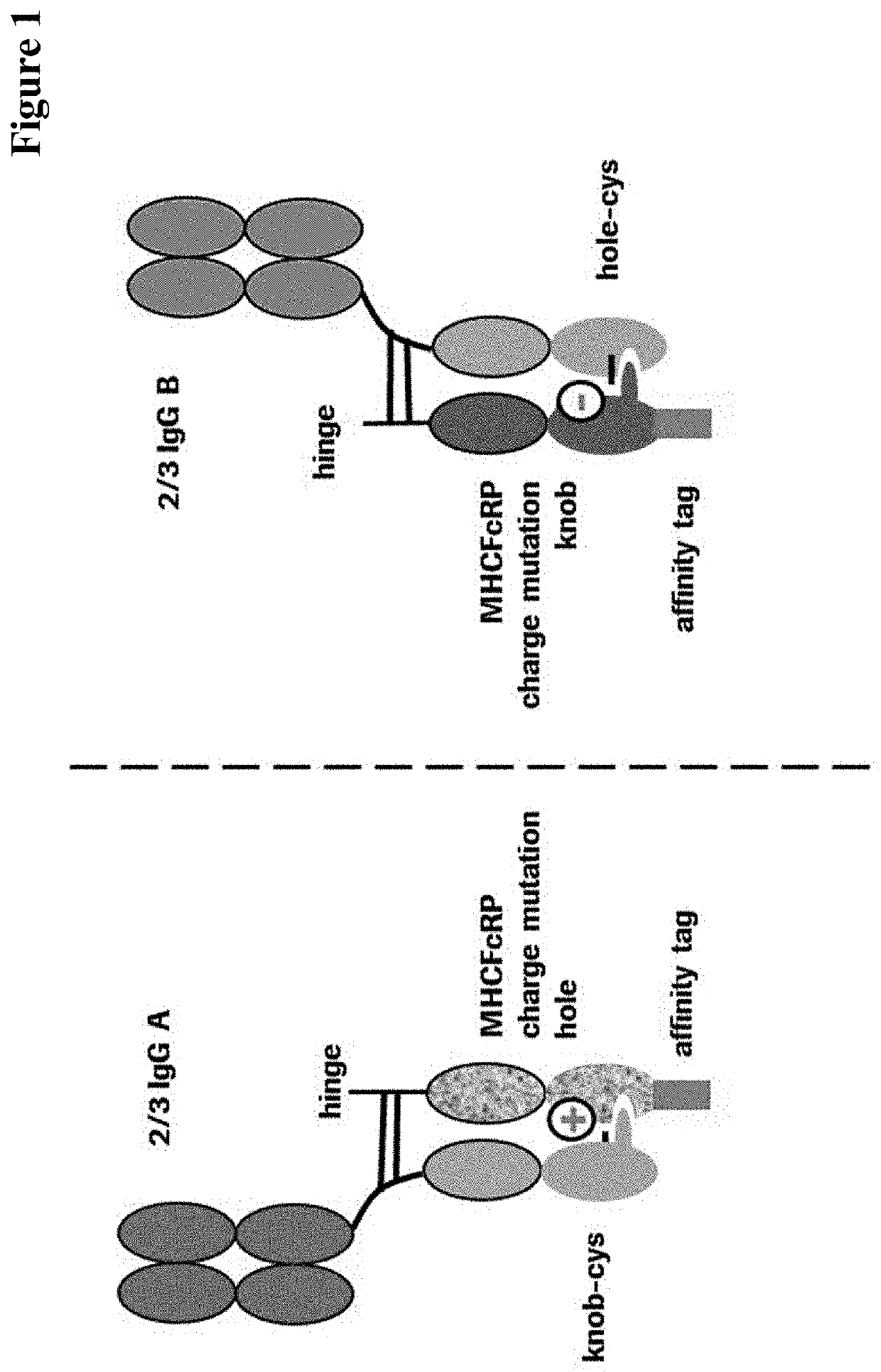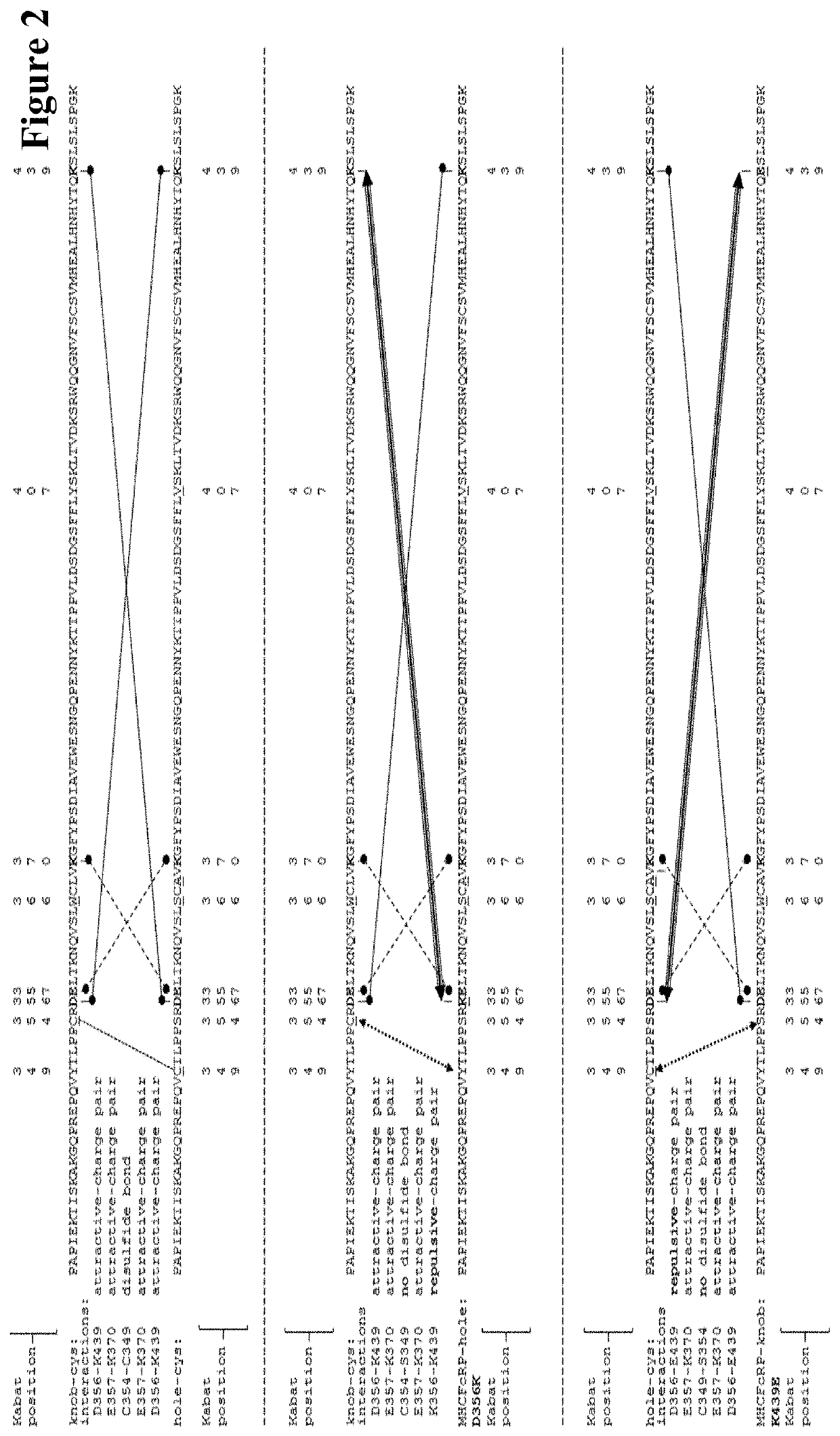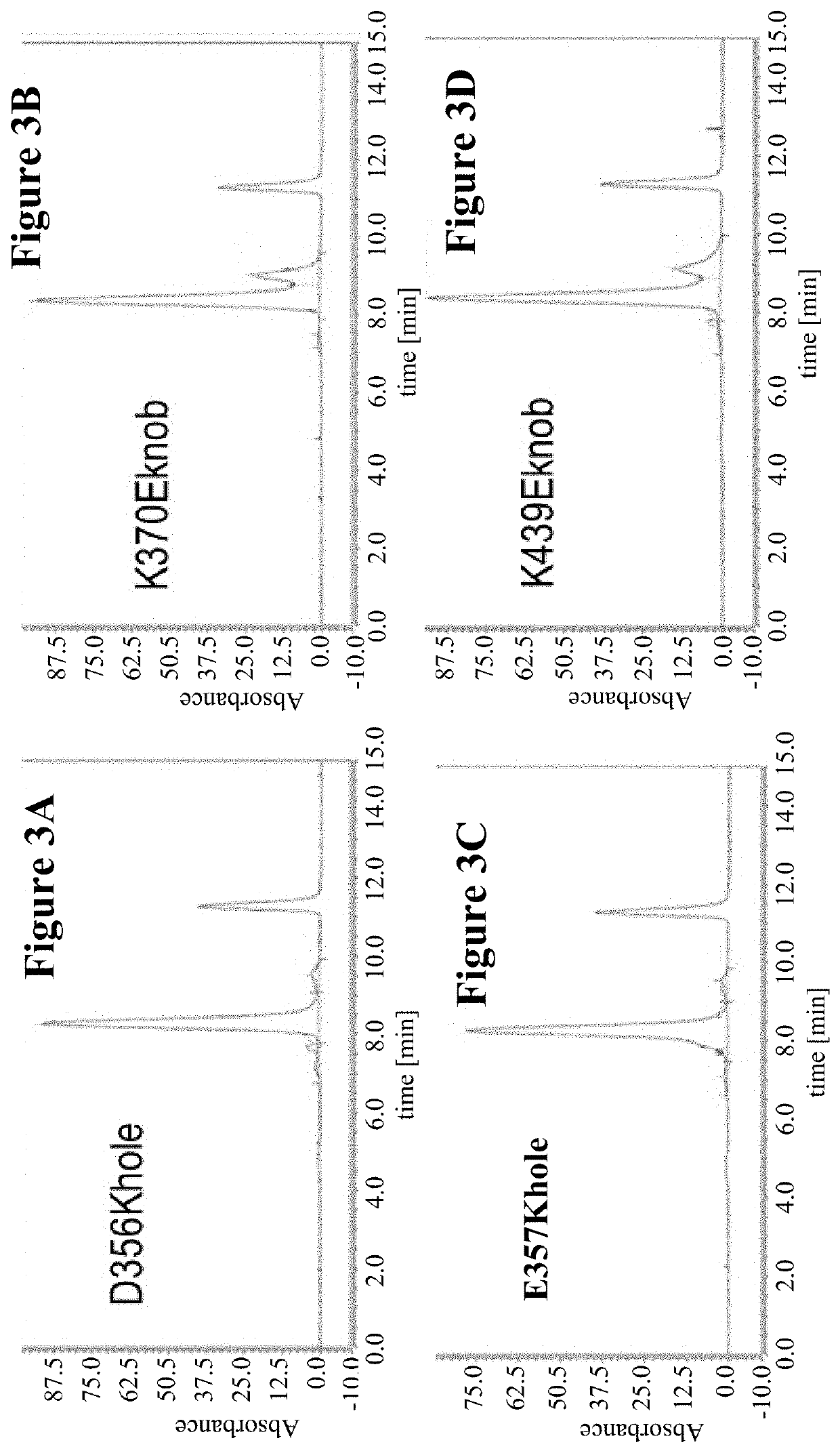Method for in vivo generation of multispecific antibodies from monospecific antibodies
a monospecific antibody and in vivo technology, applied in the field of in vivo generation of multispecific antibodies from monospecific antibodies, can solve the problems of contaminating to some degree the bsab preparation, difficult to achieve, and limit the process and composition of post-assembly bsab preparations, so as to eliminate the risk of systemic side reactions
- Summary
- Abstract
- Description
- Claims
- Application Information
AI Technical Summary
Benefits of technology
Problems solved by technology
Method used
Image
Examples
example 1
Design and Modular Composition of 2 / 3-IgGs
General Remarks
[1451]FIG. 1 shows the design and modular composition of the 2 / 3-IgGs used in the methods according to the current invention. These 2 / 3-IgGs are composed of three individual chains: one light chain (normally a full length light chain comprising a light chain variable domain and a light chain constant domain), one heavy chain (normally a full length heavy chain comprising a heavy chain variable domain and all heavy chain constant domains including a hinge region) and one heavy chain Fc-region polypeptide (normally a heavy chain Fc-region fragment comprising hinge-CH2-CH3). The variable domains of the light chain and the heavy chain form a functional binding site. The heavy chain (normally derived from the human IgG1 subclass) contains either the knob-cys-mutations or the hole-cys-mutations (the mutations T366W and S354C in the CH3 domain of an antibody heavy chain is denoted as “knob-cys-mutations” and the mutations T366S, L368...
example 2
Expression and Purification of 2 / 3-IgGs
[1456]Expression of 2 / 3-IgGs was achieved by co-transfection of plasmids encoding light chain, heavy chain (with knob or hole-mutations) and matching MHCFcRP (hole or knob) into mammalian cells (e.g. HEK293) via state of the art technologies.
[1457]In more detail, for example, for the production of the 2 / 3-IgGs by transient transfection (e.g. in HEK293 cells) expression plasmids based either on a cDNA organization with or without a CMV-Intron A promoter or on a genomic organization with a CMV promoter were applied.
[1458]Beside the antibody expression cassettes, the plasmids contained:[1459]an origin of replication, which allows replication of this plasmid in E. coli, [1460]a B-lactamase gene, which confers ampicillin resistance in E. coli., and[1461]the dihydrofolate reductase gene from Mus musculus as a selectable marker in eukaryotic cells.
[1462]The transcription unit of each antibody gene was composed of the following elements:[1463]unique re...
example 3
Generation of Bispecific Antibodies (bsAbs) by 2 / 3-IgG-Exchange Reaction
[1479]The 2 / 3-IgGs that contain a light chain, a heavy chain and MHCFcRP have been generated in two types of KiH heterodimers: full length heavy chain-knob::MHCFcRP-hole and full length heavy chain-hole::MHCFcRP-knob. Both types of 2 / 3-IgGs are somewhat ‘flawed’ as the MHCFcRP lacks the additional CH3 cysteine necessary to form inter-chain disulfides to the heavy chain, and the MHCFcRP contains charge mutations without matching counterpart in the full length heavy chain. The modules that make up those flawed heterodimers, however, are capable to rearrange to bispecific heterodimers with matching charges as shown in FIG. 4. The full length heavy chain (knob-cys) of 2 / 3-IgG A and the full length heavy chain (hole-cys) from 2 / 3-IgG B form a matching heterodimer. Matching heterodimers are also formed when MHCFcRP (hole-charge) interacts with MHCFcRP (knob-charge). Thus, exchange reactions based on temporary separati...
PUM
| Property | Measurement | Unit |
|---|---|---|
| Fraction | aaaaa | aaaaa |
| Fraction | aaaaa | aaaaa |
| Fraction | aaaaa | aaaaa |
Abstract
Description
Claims
Application Information
 Login to View More
Login to View More - R&D
- Intellectual Property
- Life Sciences
- Materials
- Tech Scout
- Unparalleled Data Quality
- Higher Quality Content
- 60% Fewer Hallucinations
Browse by: Latest US Patents, China's latest patents, Technical Efficacy Thesaurus, Application Domain, Technology Topic, Popular Technical Reports.
© 2025 PatSnap. All rights reserved.Legal|Privacy policy|Modern Slavery Act Transparency Statement|Sitemap|About US| Contact US: help@patsnap.com



